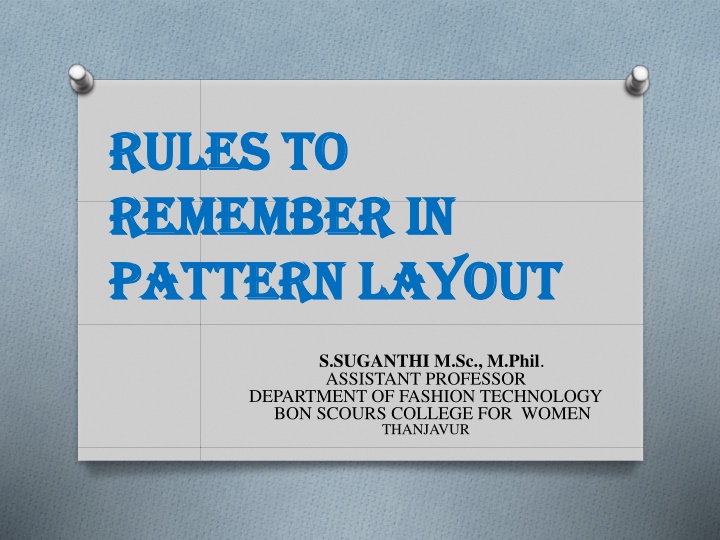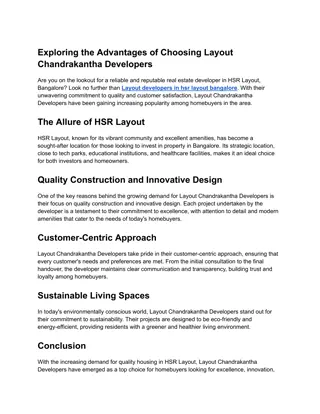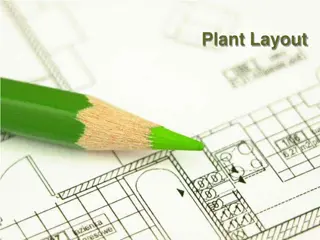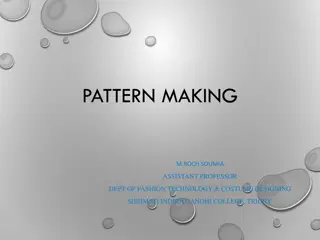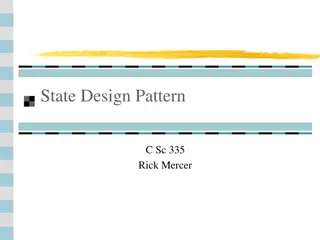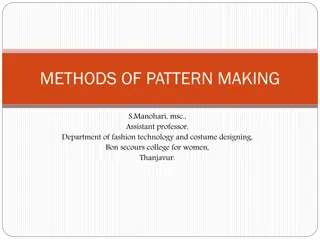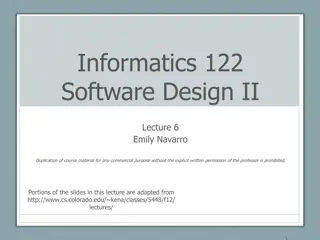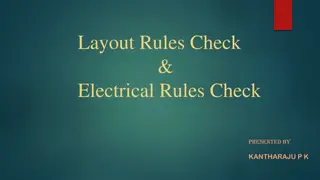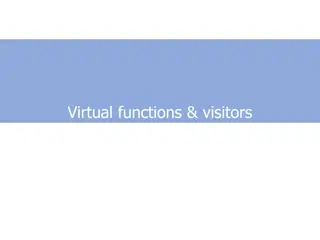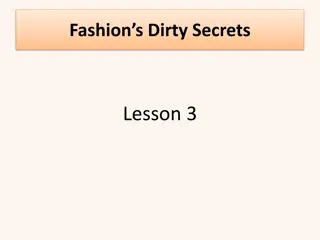Essential Rules for Pattern Layout in Fashion Design
Proper pattern layout is crucial in garment construction. Press fabric, choose the right fold method, align grain lines, leave space for cutting, pin patterns securely, and use special layouts for specific designs. Following these guidelines ensures efficient cutting and accurate garment construction.
Download Presentation

Please find below an Image/Link to download the presentation.
The content on the website is provided AS IS for your information and personal use only. It may not be sold, licensed, or shared on other websites without obtaining consent from the author.If you encounter any issues during the download, it is possible that the publisher has removed the file from their server.
You are allowed to download the files provided on this website for personal or commercial use, subject to the condition that they are used lawfully. All files are the property of their respective owners.
The content on the website is provided AS IS for your information and personal use only. It may not be sold, licensed, or shared on other websites without obtaining consent from the author.
E N D
Presentation Transcript
RULES TO RULES TO REMEMBER IN REMEMBER IN PATTERN LAYOUT PATTERN LAYOUT S.SUGANTHI M.Sc., M.Phil. ASSISTANT PROFESSOR DEPARTMENT OF FASHION TECHNOLOGY BON SCOURS COLLEGE FOR WOMEN THANJAVUR
1.Press the fabric as well as the pattern pieces flat before laying the pattern on the fabric. 2.Use a large table or any hard flat surface for accommodating the work. 3.If an open layout is used, place the fabric right side up on the table For all other layouts fold the fabric right sides facing and wrong sides out
4.Decide on the best way to fold your cloth this will depend on the width of the cloth,width of your pattern pieces, the type of cloth and design of the garment (whether leftand right haves are identical. The common methods of folding the cloth for laying out pattern pieces arethe following a. Lengthwise centre fold b. Off center lengthwise fold: c. Crosswise center fold d. Off Center Crosswise fold e. Double fold f. Combination fold g. Open layout
5.Straight grain lines on patterns must be kept parallel to the fabric selvedge. To ensure this, measure and adjust the pattern so that both ends of the straight grain line are the same distance from the selvedge and pin the pattern to the fabric along the grain line arrows. 6.Fold lines on the patterns must be kept on folded edges of fabric. 7.Leave enough space between patterns for cutting outward notches and marking seam allowance (if the patterns do not include seam allowances). .
Also make sure that there is enough material left for cutting out belts, facings, etc. for which you may not have made paper patterns 8.The patterns must be placed on the fabric in the most economical way. 9.Pin patterns to the fabric firmly, after placement of the pattern has been decided, pin the corners and the long outside edges of the patterns, placing pins close to and approximately perpendicular to the cutting line. .
Use just enough pins to keep the pattern in position. Too many pins will distort the edges. You should start cutting thefabric only after pinning all the pattern pieces 10.Take care to use special layouts for asymmetric designs and for fabrics with bold designs, striped and checked designs, designs going in one direction and fabrics with nap and pile.
11. Take care to use special layouts for asymmetric designs and for fabrics with bold designs, striped and checked designs, designs going in one direction and fabrics with nap and pile. 1.Fabric with lengthwise striped design
2.FABRIC WITH BOLD 2.FABRIC WITH BOLD DESIGNS SUCH AS PLAIDS SUCH AS PLAIDS DESIGNS
3. ASYMMETRIC 3. ASYMMETRIC DESIGNS DESIGNS
